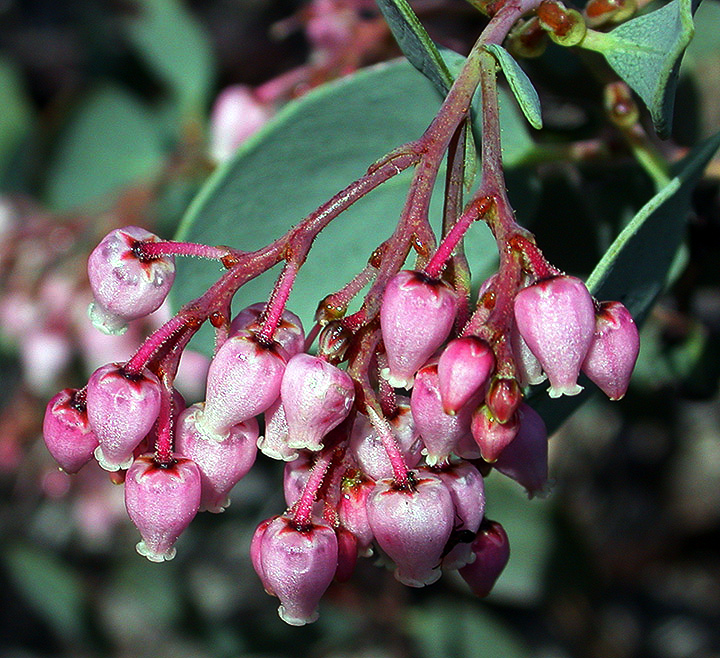
|
This is a close-up of pinkish flowers on the Sticky white-leaf manzanita, Arctostaphylos viscida, growing in the vicinity of Lygodium Gulch, a classic fossil leaf locality in the Middle Eocene Ione Formation, Ione Basin, western foothills of the Sierra Nevada, Amador County, California. Sticky white-leaf manzanita is one of the two rather wide-spread species of manzanita that inhabit the unique Ione Chaparral botanic association in the Ione Basin. The other variety of manzanita found there is the rare and protected Ione manzanita, Arctostaphylos myrtifolia, which grows nowhere else in the wild on Earth, except on the harsh, acidic soils developed in the Ione Formation of the Ione Basin, California. Image taken on March 8, 2004. In early March, 2004, I had heard news reports that the manzanita blooms in the western foothills of the Sierra Nevada were especially abundant. That was quite an enticement all by itself, of course. Also, it was undeniably obvious that I had not visited the Ione Basin in roughly 9 months, not since the fabulous field trip on June 3, 2003, with paleobotanist Howard Schorn and geologist Robinson Cecil; that visit was to help Robinson, then a geology student at the University Of Arizona in Tucson, familiarize herself with the leaf-bearing Eocene stratigraphy of the western foothills of the Sierra Nevada. As a member of the scientific team studying the Eocene floras of the Sierra Nevada--a project funded by a National Science Foundation grant--Robinson had planned to measure several of the critical Eocene geologic sections; Howard had wanted her to examine at least a couple of the most prolific and representative fossil leaf localities of the Ione Basin before they drove farther up the slopes of the foothills to investigate the abandoned, open-pit hydraulic gold mines, where chocolate-colored shales interbedded with the so-called auriferous gravels produced one of the best-preserved and largest concentrations of Eocene fossil leaves in North America--the classic Chalk Bluffs Flora. Needless to report, I was itching to return to the Ione Basin. For my day's visit on March 8, 2004, I planned to document not only the manzanita blooms in the vicinity of famous Lygodium Gulch, probably the most prolific and accessible of the great fossil leaf localities in the Middle Eocene Ione Formation of the Ione Basin, but also a few of the other fossiliferous sites in the immediate area, as well. Please note: All fossil localities in the Ione Formation of Amador County, California, presently occur on private property; explicit permission from the land owners must be secured before collecting fossils there. |